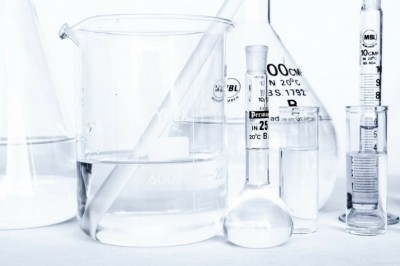The Different Properties And Applications Of Glycerine
Glycerine, also spelled glycerin, is a kind of organic compound known as sugar alcohol with a chemical formula C3H8O3. It occurs as a sweet-tasting, viscous liquid that is colorless and odorless. It is miscible in water and generally non-toxic. In nature it occurs in form of glycerides. The glycerides are esters of the compound and are fundamental components of lipids.
Various industries see glycerine in numerous applications. It is included in pharmaceutical preparations due to its lubricating and hygroscopic properties. Thus it is found in cough syrups, expectorants, and suppositories. In personal care products it is found in shaving creams, soaps, mouthwash, toothpastes, skin moisturizers and conditioners, and hair care products. The substance is an excellent solvent. It serves as a humectant (moisture-retaining agent) and a softener in candy and cakes, as well as a food preservative.
A molecule of glycerine or glycerol contains three chains of carbon. In each carbon atom a hydroxyl group is attached. The hydroxyl group is represented as OH. The compound owes its high solubility in water and its hygroscopic nature to the hydroxyl groups. A compound that is hygroscopic has the property of attracting water molecules from the air or from the surrounding. When hygroscopic substances are used for the purpose of retaining moisture, they are accurately referred to as humectants. Glycerol melts at 18°C and boils at 290°C under standard conditions.
Today, the production of the compound involves either of the following: saponification or transesterification. Saponification involves a reaction of an alkali, say sodium hydroxide or potassium hydroxide, and a fat or oil. This process forms soap and glycerol. Transesterification is a process whereby a glyceride undergoes a reaction with an alcohol in the presence of a catalyst. The catalyst is either an acid or base. In this reaction, two compounds are formed. One is the new ester. The other is glycerol. In biodiesel manufacture, the hygroscopic compound occurs as a 10 percent by-product and is a result of vegetable oils undergoing transesterification. This process contributes heavily to the amount of crude glycerol in the market. This unrefined liquid may be purified further to remove excess water and chemical residues as a result of transesterification.
The compound is considered a carbohydrate, but it is generally different from sugar in terms of structure and metabolic pathway in the body. Unlike sucrose (table sugar), glycerol does not raise blood sugar levels, thus it has a low glycemic index. The synthesis of triacylglycerols and phospholipids in the liver involves glycerol as a precursor. The source of glycerol is of course stored fats. The body breaks down fats into glycerol and fatty acids. The liver converts glycerol into glucose which powers cellular respiration and metabolism.
The compound has thousands of industrial applications. In medicine and pharmaceutical preparations, the compound is employed as a means to provide lubrication, improve smoothness, and act as a humectant. It is also used as a laxative when used in enema or a suppository. Cough syrups and expectorants also contain the substance. The compound is a good emulsifying agent, keeping insoluble tannins from precipitating in ethanol extracts of plants. This is especially useful in making of tinctures. The substance is a component of nitroglycerin, a known ingredient in explosives, but is also used to treat heart disease.
In personal care products, this viscous compound is used as an emollient, humectant, solvent and a lubricant. An emollient is a substance that soothes and softens the skin. Toothpastes, mouthwash, shaving creams and soaps contain glycerol. Home-made soaps contain larger amounts of this organic compound than the usual comercially produced soaps.
There was a controversy about the moisture-retaining capacity of the substance. Some believed that as much as it draws water from the air, it may also draw water from the skin, inducing more dryness. This, however, remains unproven.
Jo is a writer for ReAgent Chemical Services Ltd (http://www.reagent.co.uk), a reputable UK stationed chemical manufacturer that makes, stocks and distributes a vast selection of premium chemicals. If your firm is seeking premium chemical product for instance Glycerine or has other industrial compound requirements for applications similar to chemical fusion, analytical uses and cleaning then take a look at ReAgent Chemical Services Ltd.






















